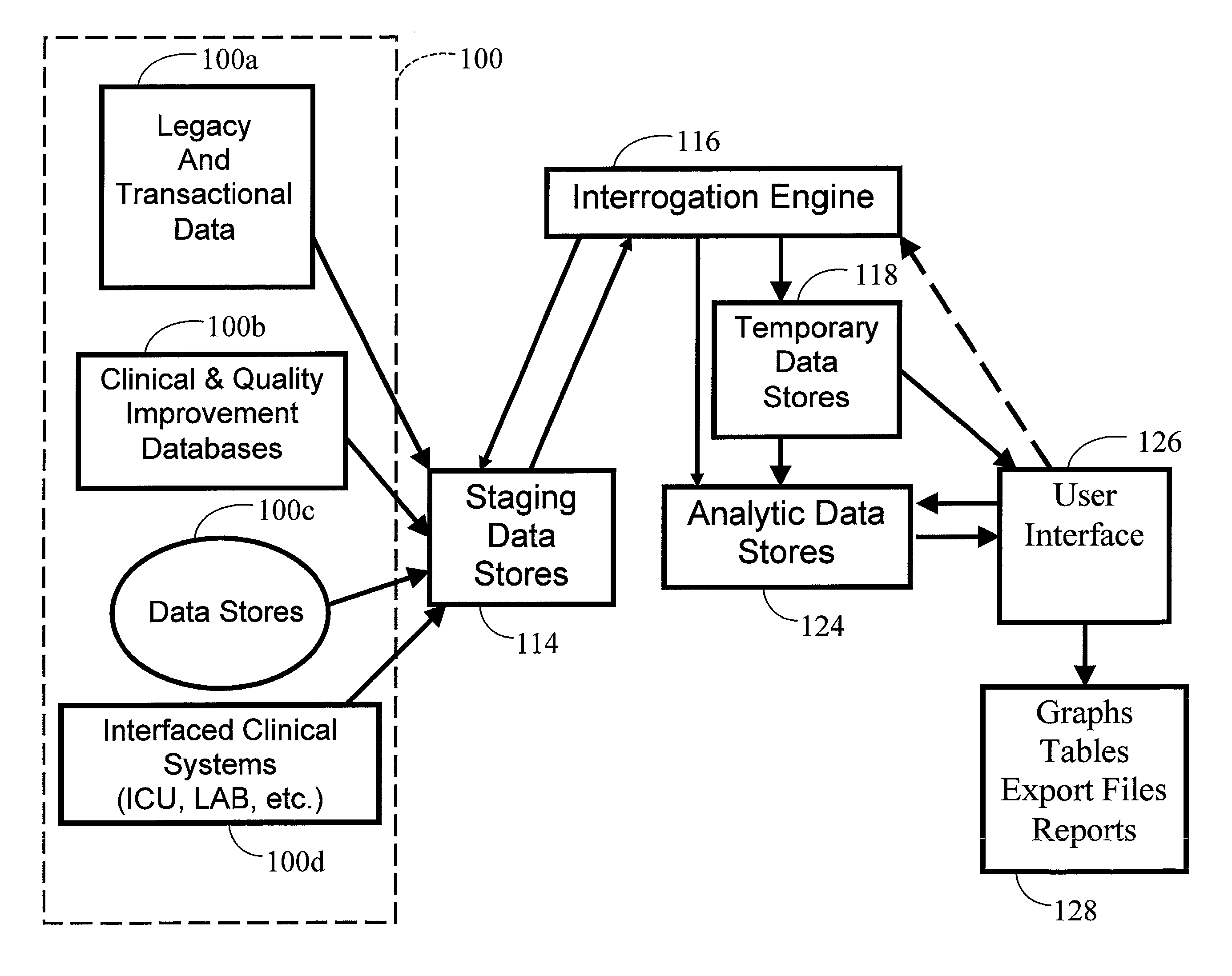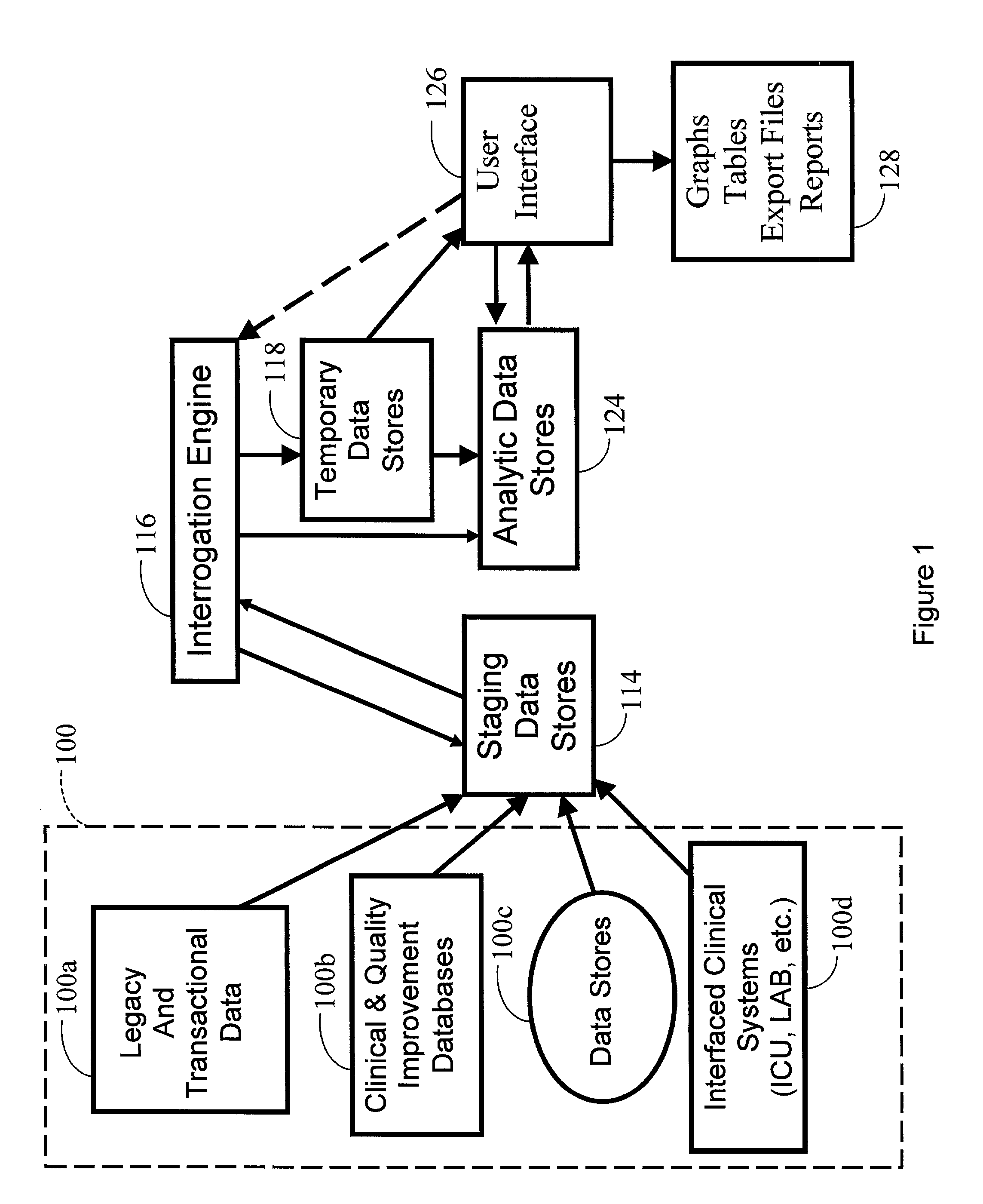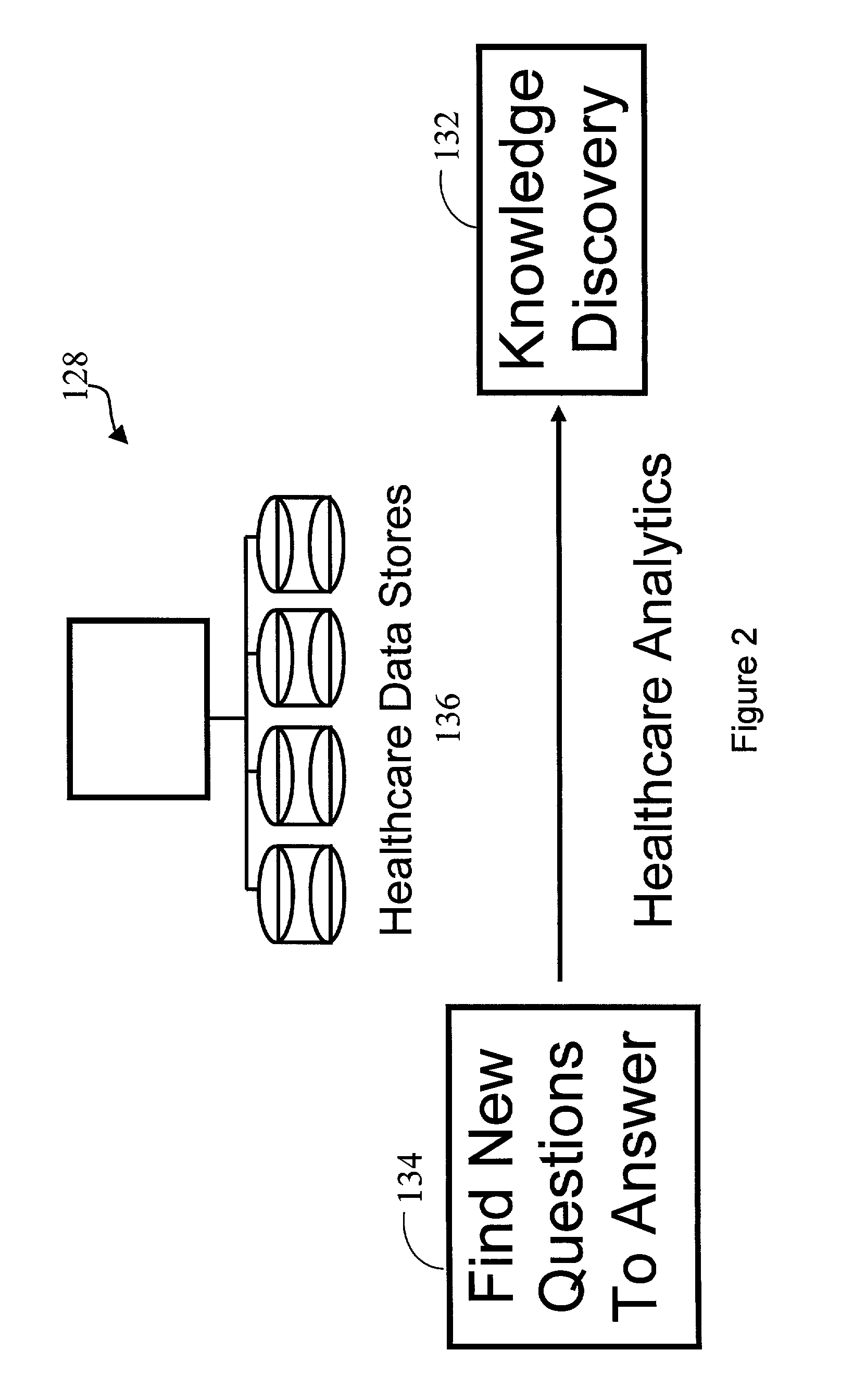Analytics and data warehousing infrastructure and services
- Summary
- Abstract
- Description
- Claims
- Application Information
AI Technical Summary
Benefits of technology
Problems solved by technology
Method used
Image
Examples
example 1
[0041]FIG. 5 shows an exemplary process or flow of data in the interrogation engine 116. The algorithms set forth below are exemplary embodiments of the individual steps of the process. Specifically, the code (written in the STATA®'s programming language for the purpose of these examples, but not limited by programming language) illustrates how the present invention, loads extracted data into staging data tables and then interrogates the staging data tables to create analytic data stores 124. Example 1 is directed to data from an emergency department (ED). FIG. 5 shows the exemplary process used in Example 1.
[0042]In this example, extracted ED source data (Source Data 1: ED Source Data File) has a row for every time a patient uses the hospital's emergency department (ED).
[0043]Each row represents one ED visit. The resultant analytic data table (ED) will include for each ED visit a number of proxy events (e.g. a proxy event indicating a second ED visit within seven days of a prior vi...
example 2
[0074]Example 2 (FIG. 6) demonstrates stratification, another preferred feature of the present invention, in which the present invention has the ability to group (stratify) patients, analyze events by group, and compare groups. Elements of the analytic or staging data stores 124, 114 define stratifications. Events and combinations of events and data elements can also be used to define stratifications. Stratifications are used to define study populations such as patients undergoing coronary artery bypass graft surgeries (CABG), patients with acute myocardial infarction (MI or heart attack), San Francisco surgery patients, hypotensive patients, and hypokalemic patients. Other exemplary pre-defined stratification groups may include CABG, coronary artery angioplasty, classification by department (Medicine, Surgery, Ob-gyn, Pediatrics, Psychiatry), surgical subspecialty, coronary artery disease, acute MI, respiratory failure, American Society of Anesthesiologists (ASA score), and anesthe...
example 3
[0146]The event creation GUI allows a user to create more complex events, such as those based on a variable(s) taking on a particuliar range of values for a specified length of time. For example, using GUI 2: Event Creation, CABG Following Angioplasty the user may create an event that summarizes the occurance of an event with many episodes during the course of a hospitalization, such as tachycardia (an abnormally high heart rate). In Example 3, Analytic Data Table 7: Critical Care Detail, contains very detailed physiologic information from a patient's intensive care unit stay. Analytic Data Table 7: Critical Care Detail has, in part, the following variables:
[0147]
Analytic Data Table 7:Critical Care Detail (Variables)variablestorage typedisplay formatlnstr8%9spatient iddateint%dtimestr5%9shrint%8.0gheart ratebpsysint%8.0gsystolic blood pressurebpdiaint%8.0gdiastolic blood pressurerespiratoryrateint%8.0g
[0148]
Analytic Data Table 7: Critical Care Detail (Observations)lndatetimehrbpsysb...
PUM
 Login to View More
Login to View More Abstract
Description
Claims
Application Information
 Login to View More
Login to View More - R&D
- Intellectual Property
- Life Sciences
- Materials
- Tech Scout
- Unparalleled Data Quality
- Higher Quality Content
- 60% Fewer Hallucinations
Browse by: Latest US Patents, China's latest patents, Technical Efficacy Thesaurus, Application Domain, Technology Topic, Popular Technical Reports.
© 2025 PatSnap. All rights reserved.Legal|Privacy policy|Modern Slavery Act Transparency Statement|Sitemap|About US| Contact US: help@patsnap.com



